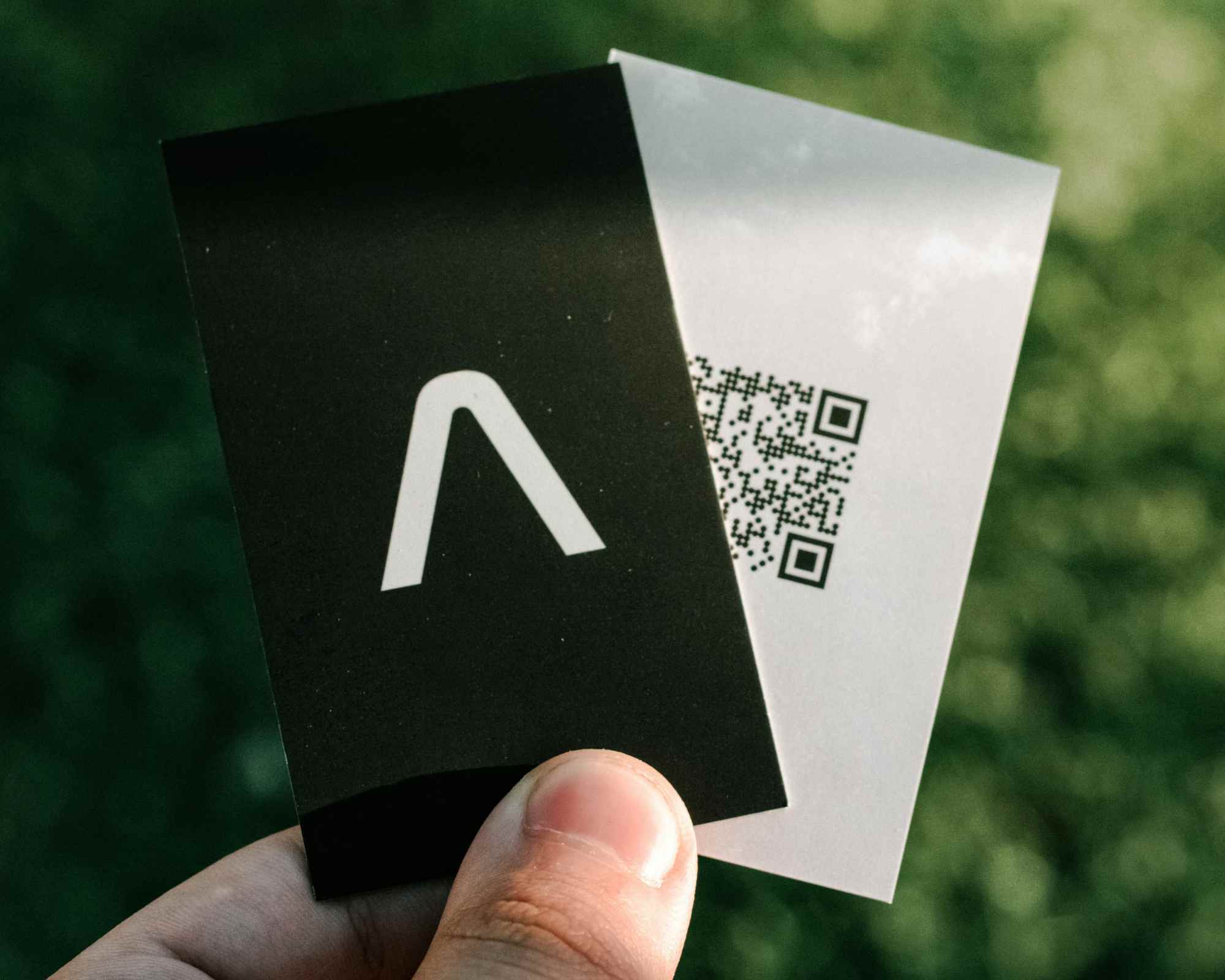Digital product passports have been around for a while, but as the European Union looks set to mandate them in the next few years, we look at what they are, and the impact they’ll have in making fashion more sustainable.
What is a digital product passport?
In the same way that your own passport holds core details of who you are and records where you’ve been through a series of official stamps, a digital product passport does a similar thing for products. Proponents believe product passports could support the shift towards a more circular industry by consistently and reliably harnessing information such as raw material origins, durability, care instructions, and repairability and making it available to the likes of retailers, recyclers, and consumers.
Digital product passports have been around for a while and at the moment, are used voluntarily across the fashion industry by brands including Nobody’s Child, Artknit Studios, Moncler, and Mr Porter’s in-house label, Mr P.
The European Commission’s digital product passport
You might be hearing more about digital product passports now because the European Commission looks likely to mandate them for certain items in the European Union, and textile products—along with batteries and toys—will be among the first product categories to have passports implemented.
It’s all part of the European Commission’s Ecodesign for Sustainable Products Regulation (ESPR), which is expected to be approved in 2024 and implemented in 2026. The Commission is the first regulator in the world to mandate digital product passports across multiple industries. And while this regulation is currently only aimed at products brought to market in the EU, it’ll have a much wider impact because so many supply chains are global. This could represent a step towards the legislated publication of traceability and sustainability information.
The European Commission’s proposal outlines some requirements for the passports that look to be mandated, but the wider landscape of product passport solutions can vary quite a lot from provider to provider. Below, we’re taking a broad look at how product passports actually work in general and what their impacts could be for consumer empowerment.
How do digital product passports work?
Products are each given a unique identifier that’s visible on the item itself, its packaging, the documents that come with it, or the webpage it’s listed for sale on. This could be a QR code, RFID tag or barcode, which links to formalised data that may include everything from the origin and nature of a garment’s material to the factory in which it was sewn.
While most of this information will be widely available in the passport, access to some data could be limited to specific users, such as recyclers or retailers.
A tool for greater circularity and transparency?
This collection of data from across a product’s lifecycle could help businesses better understand the processes and environmental impact behind the things they’re making, and how their products comply with other sustainability regulations.
Passports could also help businesses to offer repair, recycling and reuse services by directing customers to points for each service and also sharing details on what elements of a product are recyclable with sorting organisations—something that’s key in shifting to a circular fashion model. Detailing exactly what materials are incorporated into a product, for example, the percentage of cotton in a polycotton blend or the fibre content of threads used in stitching, could improve recycling and reuse at the end of the item’s life.
Visibility on repairs and resale (which could be bookable through the passport itself) could make it easier for products to be kept in circulation for as long as possible, rather than being sent to landfill.
It’s a similar story for end-of-life management information. When businesses supply details about safely disposing of the non-recyclable elements in their products, there’s less chance of toxic or dangerous materials ending up in landfill or harming the environment.
Another potential benefit of the digital product passport is that it could help inform consumers about the sustainability of products. And in luxury fashion, specifically, passports could be vital in demonstrating product authenticity to a degree that hasn’t been seen before, instilling more trust in customers making big purchases and potentially increasing their resale value down the line.
While proponents suggest that passports will give shoppers greater access to information about where their purchases come from, questions remain about the ease of access and product comparability as product passports become more common, particularly if the information’s formatting and level of detail varies from brand to brand.
This collection of data could help businesses better understand the environmental impact behind the things they’re making
Good On You’s CEO Gordon Renouf thinks this aspect of the passport could be more hype than substance. He cites the effort involved in a consumer seeking out the passport’s information, digesting it, and understanding it in context as key problems that need to be solved before a passport can provide consumers with information they can rely on.
For example, Renouf says that information about a product’s CO2 emissions or material composition could lack context and be confusing to consumers: “The overall behaviour of a brand, for example its climate change actions and engagement with workers’ rights, has a more significant impact than product-level attributes. To achieve sustainability goals we need to change overall company practice, not demonstrate that individual products do better on narrow criteria.”
Katelin Opferkuch, ratings analyst at Good On You, underscores the need for comparability across product passports: “Providing the same format for supply chain information would make it easier for highly motivated consumers or third parties like Good On You to identify which brands are making the effort to disclose legitimate information and which brands don’t have complete data.”
These are only a few of the challenges businesses and consumers face in implementing and using digital product passports. Addressing these questions will be key to unlocking the promised benefits.
The challenges of digital product passports
One of the biggest challenges is data storage. It will require a significant time and cost investment to arrange the infrastructure to hold vast amounts of product data, particularly for companies with large product inventories.
And then there’s data security—vital for reliable passports and traceability, but another potentially significant investment.
Formatting this data and making sure it complies with any future regulation accompanying the passport could also be a challenge. Dozens of businesses have already emerged to address these requirements, for example, Renoon, Fairly Made, and EON. Good On You hasn’t tested these software solutions, and they’re just a few of the many businesses offering product passport solutions for brands that are seeing an uptake in their services across the industry.
EON’s vice president, Nicole Rigas, dubs the passport a “digital twin” for every product, and explains that the company will use a cloud model alongside pre-built infrastructure to integrate into brands’ existing workflows.
Rigas believes that another challenge for brands will be getting all teams throughout a business—and its supply chain—on board to unify their data. That’s tricky, she explains, because “each of these different departments often has its own desired functionalities and use cases, from driving circular business processes to brand protection to customer engagement.”
And it’s not just brands that will need to invest in data management and new processes to meet requirements if passports are mandated by the European Commission. Opferkuch points out that the financial and organisational onus for a lot of supply chain information is likely to fall on suppliers outside of the European Union. “It will require new employees, skills, and systems to manage all the data requests, and suppliers will be at a competitive disadvantage if they don’t do this. In theory, this should push suppliers to improve the sustainability of their practices, but it’s not as straightforward as that, especially if they won’t earn extra money for putting all this in place,” she explains.
Since transparency is key to digital product passports, the brands that are already tracing their supply chains and have disclosure systems in place will be in a much better position to adopt passports when they’re mandated across the industry.
Will digital product passports make fashion more sustainable?
The industry experts we spoke to have differing opinions on the nuances of digital product passports, but they all agree that the potential for enhancing supply chain traceability is a good thing.
“Digital product passports solve some of fashion’s biggest challenges for brands, customers and circular businesses… It’s a simple shift with enormous potential for industry transformation,” says Rigas.
Renouf, however, has mixed views about the overall impact of passports. He says their ability to provide additional and more reliable information to businesses in the supply chain is a definite plus, and knowing what materials a product is made from, for example, will support reuse and save costs in recycling.
But Renouf thinks the idea that passports are an effective way to drive consumer action is a stretch: “There is little evidence that consumers will flock to their scanners to access information at the point of sale. Even if they do, the information from a passport is not the easy-to-use, comprehensive data consumers need. Nor does it tell the full story: in particular, there is nothing about the performance of the brand overall—the key driver of fashion’s impact on workers and the environment.”
Meanwhile, Georgia-Rae Taylor, sustainability strategy director at Eco-Age, has concerns about the industry’s readiness: “The potential of digital product passports is massive—they could bring a whole new level of transparency and accountability to products and supply chains.”
Taylor continues: “However, despite the promise, the fashion industry—among others—remains largely unprepared for the passport era. Supply chains are very opaque, and brands struggle with gaps in product data and a lack of understanding regarding inherent risks.”
The world’s most polluting industries have proven time and time again that they can’t be trusted to make the deep change needed to move towards a more sustainable world. Mandating consistent information disclosure is a great step forward, though whether passports live up to their hype remains an open question.



















